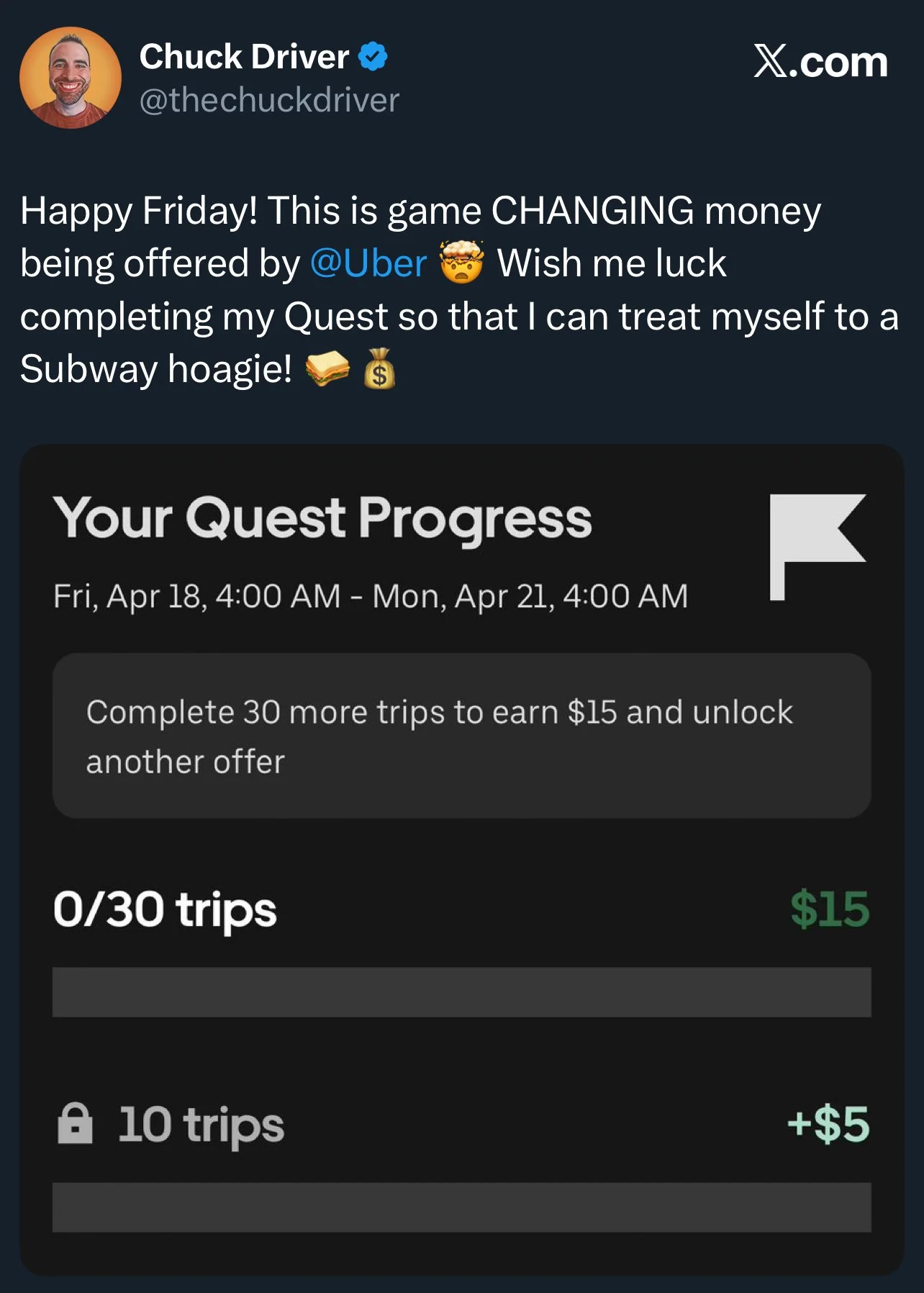Are Rideshare Platforms Driving Away Their Best Drivers?
The Incentive Dilemma
Uber and Lyft originally designed their driver apps to attract and keep drivers engaged with appealing cash incentives. They had plenty of investor money to support these incentives, making it easier to encourage drivers to stay on the road. However, times have changed, and these companies are now looking for new ways to maintain driver interest without relying solely on cash rewards.
Unfortunately, there’s a concerning trend happening: driver incentives are being reduced. As a result, the most experienced and savvy drivers are opting to stay home, creating an environment where only the less experienced or less strategic drivers remain on the road. This shift not only affects the quality of the rideshare experience but could ultimately lead to a decline in customer satisfaction and overall service quality.
The Importance of Driver Incentives
Incentives are the lifeblood of any gig economy. For rideshare drivers, incentives can take many forms—bonus pay for completing a certain number of rides, surge pricing during peak hours, and referral bonuses for bringing new drivers onto the platform. These incentives are essential for attracting and retaining skilled drivers who are willing to invest their time and resources into providing excellent service.
When drivers are motivated by fair compensation, they are more likely to maintain their vehicles, provide better customer service, and remain engaged with the platform. However, over the years, both Uber and Lyft have gradually reduced these incentives, creating a challenging environment for drivers.
In the past, drivers could earn anywhere from hundreds to thousands of dollars by referring new drivers to the platform. However, with a flood of low-skilled workers now entering the gig economy, these companies no longer need to offer extra incentives to attract new talent.
But what about retaining talent? Sadly, rideshare drivers now receive very few cash rewards for getting out on the road. I used to earn bonuses worth hundreds of dollars for completing a specific number of rides in a week, but those bonuses have dwindled to almost nothing—sometimes just $20, which barely covers a meal or two. And surge pricing has almost completely disappeared, as supply and demand consistently favor the riders.
The Impact of Reduced Incentives
When rideshare platforms cut incentives, they inadvertently send a clear message to drivers: their time and effort are undervalued. This leads to several concerning outcomes:
Experienced Drivers Stay Home: Smart and experienced drivers will weigh the cost of driving against potential earnings. If the incentives are not enticing enough, they may choose to stay home rather than risk their time and resources on the road.
Increased Competition Among Drivers: With fewer experienced drivers willing to hit the road, the remaining drivers may be less skilled or less motivated. This can result in a decline in service quality, as inexperienced drivers may not fully understand customer expectations or safety protocols.
Poor Quality Vehicles: As drivers become more hesitant to invest in their rideshare vehicles—often a significant cost for them—there’s a risk that the quality of cars on the platform will deteriorate. A decrease in vehicle maintenance and cleanliness can lead to a subpar experience for passengers.
The Downside of a "Dumb" Incentive System
The relationship between incentives and outcomes is simple: “if you have a dumb incentive system, you will get dumb outcomes.” When rideshare platforms fail to incentivize good behavior and high-quality service, they lose sight of what makes their service valuable. This can result in:
Increased Ride Cancellations: Drivers who feel undervalued may be more likely to cancel rides, frustrating customers who depend on timely transportation.
Lower Customer Satisfaction: As the standard of drivers and vehicles decreases, riders will find their experience less enjoyable, resulting in negative reviews on social media and discerning customers to switch to alternative services.
Long-Term Driver Attrition: Experienced drivers are not just a number—they are the backbone of the service. When they leave, they take their knowledge and expertise with them, making it harder for platforms to maintain quality over time.
A Cycle of Poor Outcomes
When rideshare platforms like Uber and Lyft reduce driver incentives, they risk creating an environment where only inexperienced drivers remain. A "dumb" incentive system doesn’t just lead to short-term problems—it creates a cycle of poor outcomes. As customer satisfaction declines, so too does the overall reputation of the rideshare platform, making it more challenging to attract both quality riders and drivers in the future.
This cycle perpetuates a downward trend in service quality, making it harder for the platform to regain its footing.
If rideshare platforms continue down the path of reduced incentives, they risk creating an ecosystem where only the least experienced and least invested drivers are on the road. This not only diminishes the rideshare experience for customers but also threatens the very foundation of the business model itself.
To preserve the quality of service that customers expect and deserve, Uber and Lyft must reevaluate their approach to driver incentives. A healthy incentive structure attracts skilled drivers, encourages them to invest in their work, and ultimately leads to better outcomes for everyone involved.
By recognizing that a smart incentive system is key to fostering high-quality service, rideshare platforms can work to improve both driver engagement and customer experiences. Let’s not allow the race to the bottom in incentive structures to lead to a decline in quality service. Instead, let’s keep pushing for a future where all drivers can thrive in their rideshare journey.


